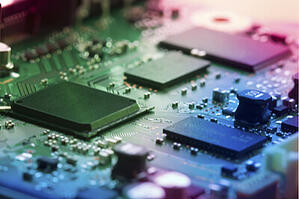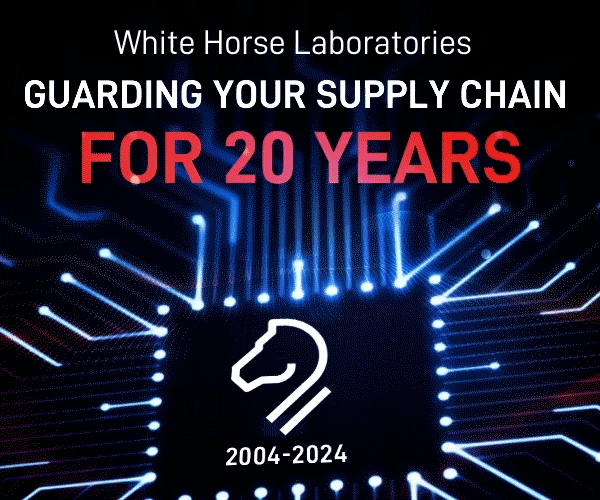Semiconductor Manufacturing: Five signs you need to migrate to a modern MES
By Louis Loh, Critical Manufacturing

A common approach to remain competitive, keep costs in check and gain increased efficiencies from existing assets comes down to embracing modern Industry 4.0 technologies.
What is a Smart Manufacturing for Semi?
An interview published in semi.org, Smart Backend Assembly Factory for Industry 4.0, highlights what Automation and Smart Factory really mean for semiconductor manufacturing, and what it should be able to achieve. Our interpretation of Smart Manufacturing is defined by these four elements:
- Interoperability: signifies the cyber-physical marketplace where CPS (Cyber-physical Systems) and CPPS (Cyber-physical Production Systems) operate in harmony, creating self-orchestrating flows, with automated coordination enabled through sensors, IoT and MES at the core.
- Information Transparency: the ability to gain contextualized edge and manufacturing data through the application of AI and ML, leading to a clearer view of overall conditions. It eliminates possible bottlenecks and achieves better operational results.
- Technical Assistance: deploying robots/co-bots and automated material handling tools to assist process personnel, not just in reducing repetitive manual labor but in active process management and decision making.
- Autonomous Decision Making: A highly advanced state of automation, where intelligent cyber-physical entities make informed decisions, which result in direct improvement of the status-quo. This goes beyond execution and well into the realm of process optimization.
So far, two things have become clear: one, in order to improve yield and reduce cycle times, semiconductor manufacturers need to move towards a smart factory set-up, with data- driven automation as the centerpiece. Two, real automation comes not just with deployment of robots and automation technology. It comes with intelligent interactions between automation tools, material and process equipment, elevated to the extent where process orchestration is fully automated and advanced algorithms govern the shop floor. Bottlenecks as an outcome are continually restricted, yields are optimized and cycle times are both predictable and under control.
Industry 4.0 and the digital transformation require at the very core the ability to harness all data needed for decision making and automation in real-time. The capability to deploy advanced analytics and derive decision support information from collected data, and the eventual use of the intelligent information to affect changes both real-time and improvement-related on the shop floor, enable both automation and process improvement.
It starts with a modern MES
The first and foremost requirement of having a more automated semiconductor manufacturing operation begins with having a modern MES at the core of a digital transformation. MES acts as a bridge between higher level business applications and lower level automation and point and ‘edge’ applications. MES is the foundation to create an environment where all data relevant to strategic goals of improvement can be captured and utilized to deliver on set objectives. But the complexity of a given process and the dependence on legacy applications and individual point solutions may act as a barrier to change. This may cause delays, and in some rare cases, a complete derailment of the endeavor to deploy a modern MES data platform.
Here are five tell-tale signs which signal the need to migrate to a modern MES:
1. Existing Systems are Rigid and Complex
If your fab still depends on a MULE (Mature Undocumented Legacy Execution system) or several point solutions for planning, scheduling and execution, it is a sign that your existing systems are rigid and their structure overly complex. One test is to simply review whether it is possible to collect data from various point solutions and your MULE and use with your ERP or SCM to affect changes to supplier schedules and delivery plans. Also, try the reverse. Is it possible for demand and projection data to be used in order to create changes in production schedules, such that flow is optimized and no bottlenecks remain, even with the complexities of re-entrant flows and tool/resource availabilities considered? If the answers you come up with are ‘no’ and ‘no,’ chances are your systems don’t allow for the free flow of data, and are unable to add context and provide real-time decision making capabilities.
2. Finding People and Support for Current Systems is a Challenge
With most home grown/point solutions, be it for quality management, material handling or process execution, as time passes the personnel who built the system either move on, or in case of legacy vendor-based applications, the support just ceases to exist. In such a scenario, with a multi-million dollar fab dependent on applications which can no longer be altered or configured to perform better, achieving the desired levels of automation can prove to be a business risk. Modern MES applications are modular, user-driven and easy to configure. Unless your current applications allow for such capabilities, or if making any changes is impossible due to the lack of support, it is high time to change.
3. Maintenance Cost for Current Systems is Escalating
In typical on-site installations, the costs of maintaining and adding storage through additional servers for new and increased process and value chain data, collection and processing requirements, is always a higher cost. Legacy systems typically need hard coding even for the simplest of cosmetic changes to be made, let alone the configuration of advanced heuristic algorithms to establish APC-like controls for better scheduling. Modern MES applications are cloud-based and allow users to configure everything from dashboards to scheduling logic based on data and evidence collected from the shop floor. If you are spending a fortune every time you make a change to your legacy MES or point solution functionality, it is time for that application to be updated.
4. Obsolete Tech and Lack of Resources to Manage
If your applications need engineers who are forced to use archaic programming languages and tools to update the functionality of the system, it is a clear sign that the technology needs to modernize. Applications which use outmoded languages like COBOL can’t possibly lead to changes which can propel your operation towards an automated and smart factory. When it becomes excruciatingly difficult to manage old systems, and in spite of your heavy dependence on them, it is advisable to make a switch, rather than lose competitive advantage by relying on obsolete technology. Modern applications are configured to handle high complexity, easy integration and the management of large volumes of data in real-time. Such capability is difficult to achieve with old tech. Without the ability of using the most p to date and accurate data to affect change, automation and smart factory will never become a reality.
5. Current Systems Lack Advanced Capabilities
Industry 4.0 brings with it an array of smart technologies, including Internet of Things (IoT), Artificial Intelligence, Virtual & Augmented Reality, 3-D printing, Cloud Computing and Automation tools like AGVs and Cobots. Some of these technologies have been used in semiconductor fabs in the past while others are relatively new. What is unique about Industry 4.0 is the ability to combine various technologies through applications like MES to drive improvements which lead to eventual process automation and optimization. Unless your current applications can optimally deploy this modern technology stack, with data at the core, it is best to assume that the systems are now obsolete and either need to be reconfigured (which is often out of budget scope), or replaced in a phased and controlled manner, with a modern MES as the centerpiece.
If you identify with any of the points made above and are determined to have a modern, automated semiconductor fab, it is the right time for you prioritize a strategic review of your deployed production systems and consider replacing them with a modern MES data platform.
One way to start is to perform a detailed assessment of the existing applications in use today. Determine which applications are core/modern, and which are legacy, in preparation for MES integration. This process is referred to as APR (Application Portfolio Rationalization) and it’s a key to begin your Industry 4.0 journey, especially when working in a brownfield site. We’ll have subsequent posts on APR in the future.
The technology now exists for fab modernization. It’s not simple, but it’s a necessary step to meet the unheard of demands for chips and components now existing. Modernizing your MES and moving away from MULE systems is a positive first step in gaining the benefits that Industry 4.0 brings to fabs.












